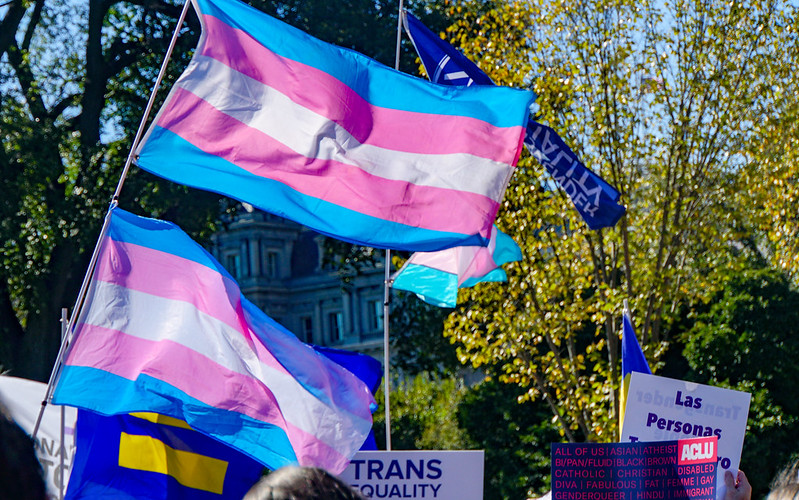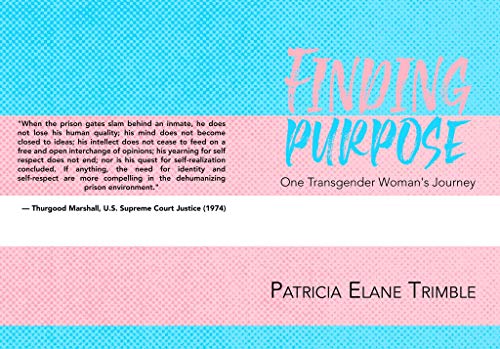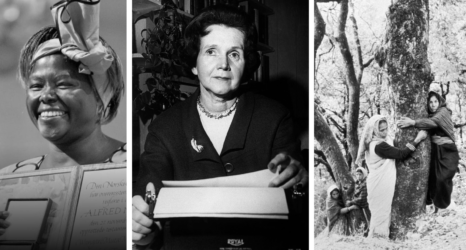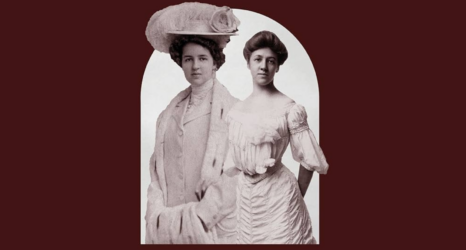I wrote Finding Purpose: One Transgender Woman’s Journey to help others see the psychological harm that comes from not permitting children to be their authentic selves, turning a blind eye to bullying, and thinking an overwhelmed and ineffective prison system could somehow “solve” social and economic problems.
Coming out as my authentic self while in a violent maximum security prison for men was my only option. Patricia could not survive another month, hidden like some embarrassing freak of nature with thoughts of suicide ever present.
I witnessed the worst misogynistic actions and attitudes of my fellow prisoners, but none of that mattered, because Patricia had to be set free to experience true freedom for the first time in her life. Sure, I made lots of mistakes, but those mistakes helped shape the trans feminist, activist and advocate I am today. My purpose has been realized, which is helping to mend the hurting souls of the incarcerated LGBTQ+ community and send them back into society ready to live free and proud.
The following is an excerpt from Finding Purpose: One Transgender Woman’s Journey:
Hiding my true identity and presenting as a man finally became too much for me. After a long talk with a close friend, I returned to my cell to say goodbye to Patrick forever. I shaved from my ears to my toes and stepped out onto the yard, my body now smoother than a supermarket chicken. I was dressed in a pair of panties I had kept hidden in my cell, daisy duke shorts and a sexy little top. I spent a long time working on my makeup, wanting my eye liner to be perfect so there could be no doubt in anyone’s mind that they were seeing a woman.
Patricia had been set free. I released her from all restrictions, and she had a lifetime of deprivation to make up for. She was not about to waste this opportunity, and she was going to make sure when this day was done, no one could ever hide her away again! I stepped out of my cell with pride, with confidence, and with a purpose. I was headed to the main prison yard to introduce Patricia to my best friend first and the whole of the prison second.
I had sex with four guys before the yard closed two hours later. Patricia was determined to prove she was sexy and desirable. I didn’t think about the dangers to my health or anyone else’s. All I cared about was how sex affirmed my womanhood and enabled me to stay high—something I found myself still enjoying. I spent years on my back or on my knees before I came to realize that my body was all any of my partners cared about. Very few of my lovers cared about me as a person, most simply wanted the quick pleasures I would so willingly provide.
I had seen members of my community forced and manipulated into carrying knives so they would get caught, just so their “men” inside could continue to abuse them, forced to sacrifice their potential freedom, just because their men were serving long sentences and did not want them to leave. That saddened me beyond words. I began to realize that most everyone, including me, looked away from the grotesque dysfunction among me and my LGBTQ+ brothers and sisters. It was then that I decided I could no longer sit back and do nothing.
I began to take younger LGBTQ prisoners under my wing and try to educate them, to teach them that, even in prison, you can control many aspects of your life; you do not have to let yourself be passed around like a bowl of party mix. In essence, I became their mother in prison. For the next 19 years, I focused all of my attention into helping members of my community lift themselves up to find a strength and pride many never knew existed. I stressed education, self help programs, and long counseling talks with mother.
What few people, if any, knew was that Patricia was spiraling deeper and deeper, back into a state of depression that had already caused her to try several times to take her own life. But for my incarcerated community, I kept a strong outer appearance and kept putting one foot in front of another. My first suicide attempt at age 13 had failed, as did the several others throughout my life. It was as though some guardian angel watched over me, forcing me to live in order to find and fulfill my purpose. But the voices calling me into the darkness, promising relief from the inner pain and release of Patricia remain with me even today.
In 2015, while sitting in administrative segregation, I reached out to a number of national LGBTQ+ organizations asking for help. I had once again been sexually assaulted, and I was having a hard time dealing with that and the now overwhelming depression. My waking moments were spent thinking of ways to end my suffering without alerting my celly; luckily most of my days were spent sleeping.
One day I received some mail from the TGI Justice Project in San Francisco. Within this envelope, I found a pamphlet titled “Still We Rise.” It was then that I first learned the term “gender dysphoria.” Really? What I feel is real, and there is treatment? I read, studied and asked questions. There are others like me in the world? That very day I mailed a request to see someone from mental health.
So began a three-year ordeal, fighting against the voices from the darkness that tried so hard to pull me back until, at long last, I was permitted to talk with a psychiatrist. I cried when, after only 20 minutes, she began addressing me with she/her pronouns, confirming that I was not some freak, that I truly was a woman.
But soon after, the state’s contracted health care provider soon fired the doctor who diagnosed me with gender dysphoria and would not let me see another doctor for nearly a year. When they did, at last, permit me to see another doctor, they asked that I be “re-evaluated.” Again, much to their dismay, the new doctor also made the same diagnosis, as did the third doctor. So much time, so much effort, so much money spent in an effort to prove I wasn’t, in fact, a woman, only to end up with three doctors all coming up with the same diagnosis: I AM A WOMAN.
On May 6, 2018 at 10:30 a.m., I was at long last given my first dosage of estrogen. The nurse at the medication window must have known this would be something very special, as she called me to medical after all other prisoners had received their medication. When she pushed the little cup containing three tabs of estradiol through the window, I found myself so full of emotion, unable to take the pills at first due to my sobs of blissful joy.
On September 17, 2018, the Circuit Court of Cole County Missouri officially changed my legal name to Patricia Elane Trimble.
You may also like:







